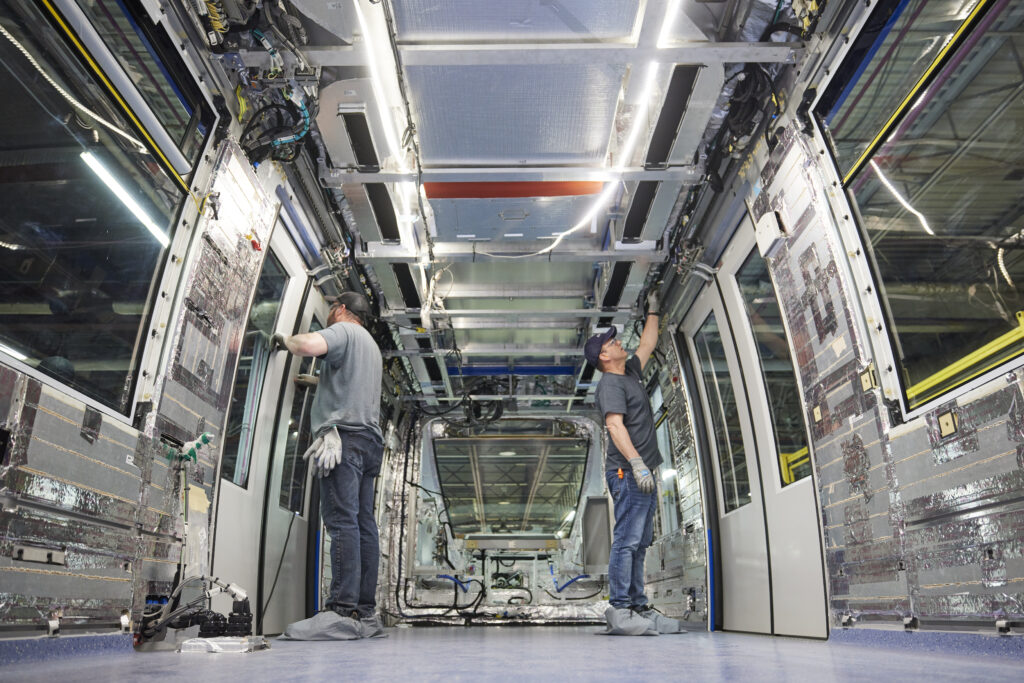Alstom Canada: Investing in local networks and getting Canadians where they need to be
Posted onEvery day, in every major city across the country, hundreds of thousands of Canadians experience Alstom’s work in action.
From the Réseau Express Métropolitain (REM) in Montreal, to Vancouver’s SkyTrain, Alstom provides a huge range of mobility and public transportation solutions. As one of the RAC’s newest associate members, Alstom is making moves that impact Canada’s economy from coast to coast to coast.
Alstom has been present in Canada for over 80 years and decided to focus its activities on mobility in 2015. The company has undergone many changes – one of the most significant of which was acquiring Bombardier Transportation in 2021.
“It’s very important in terms of size and geographical presence but what’s most important is the strategic diversity that we gained from the product portfolio,” says Olivier Marcil, Alstom’s Vice President, Public Affairs Canada. “From a diversity standpoint, we have the opportunity to offer a bouquet of solutions to our clients.”
Marcil says Alstom is now the second largest player in the passenger rail industry in the world, behind China’s state-owned Railway Rolling Stock Corporation.
The Bombardier acquisition expanded Alstom’s product portfolio, notably in operations and maintenance. Alstom also bought the engineering capacity that Bombardier Transportation held in North America, like a testing track in Kingston, Ontario and a design and prototype centre in Montreal. It’s helped the firm pursue greener innovation for the rail industry and invest in green propulsion. Notably, Alstom operated the first ever hydrogen-powered passenger train in North America over the summer of 2023, on the Réseau Charlevoix network in Quebec.
While each project that Alstom works on across the country has unique needs specific to the local market, Alstom sees one thread in common: each has long-term, positive impacts on the economy, the environment, and population.
“We’re reaching a level where it changes the lives of transit users. It’s really interesting to see cities think about rail as the backbone not only of public transportation but for economic and urban development,” says Marcil.
Marcil explains Alstom is involved in massive projects that change how cities run. Projects like Greater Montréal’s REM are completely new systems, with 67 kilometres of track connecting suburbs and key infrastructure like Montreal-Trudeau International Airport with the city’s core. Others, such as the GO Transit expansion in Southern Ontario, are among the largest mass transit system modernizations in the world.
Greater Vancouver, for its part, is adding 205 light rail vehicles to give the SkyTrain network more capacity to support the region’s anticipated growth and future needs across BC’s Lower Mainland.
“Everything is changing. We’re able to be a part of that change by making trains comfortable, accessible and reliable so that it’s easier for people to take transit instead of their car for years to come,” says Marcil.
Marcil marvels at the team that’s kept the Edmonton Valley Line Southeast LRT (which Alstom developed) running smoothly since November, even in harsh winter conditions.
Alstom is proud to have a powerful network of suppliers and partners that supports their diverse projects. With more than 1,200 suppliers, 11 sites, and about 4,600 employees across the country, Marcil says Alstom uses mostly Canadian-built products and innovation – increasing the company’s direct and indirect contributions to Canada’s economy.
“When you invest in rail, you’re supporting local jobs and expertise not only for the main provider but for the full supply chain, from top to bottom,” says Marcil.
Marcil says Alstom’s strong local footprint, as the only major player with a manufacturing footprint in Canada, is enticing for governments like Quebec’s and Ontario’s, which are requesting more and more local content when they’re investing in transit so local supply chains are sustained.
As for future projects and goals, Alstom is thinking far beyond 2024. The company recently won a contract for the tramways in Quebec City and is eagerly awaiting news from the government about the parameters of the project.
Alstom says it will continue to deliver on their projects that contribute to public rail transportation in Canada, while also deepening its commitment to sustainable, future-focused, and efficient economic development.

Photo of Alstom’s La Pocatière site. Image copyright Alstom / C. Fleury.